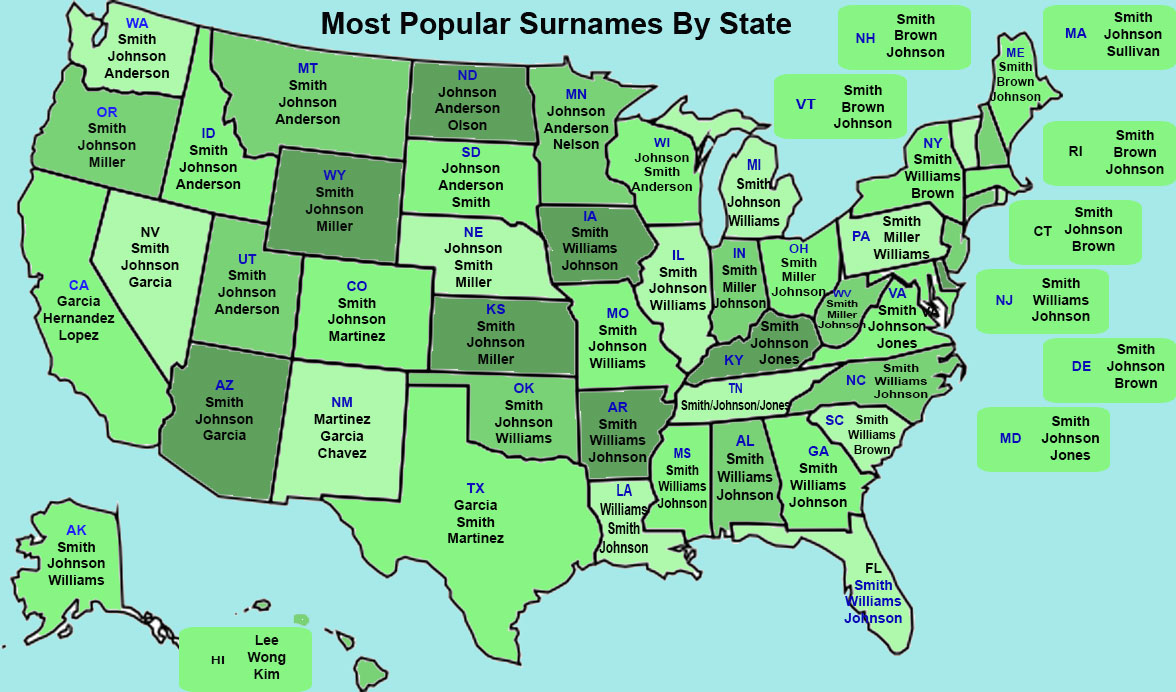Even though the US is more ethnically diverse than Canada or Australia in terms of having fewer people of British Isles descent, you couldn't really tell this from the surname data, so a lot of continental Europeans probably Anglicized their names as they assimilated (eg. Mueller to Miller).
The top surnames in the US tend to be English in origin (not that different from English Canada or Australia) or Anglicized, and the ones that aren't are Spanish.

US dominant surnames by state are still overwhelmingly English-derived with a few hints of local diversity (eg. Spanish names in the Southwest from CA to TX, the Scandinavian "Olson" in ND, and Irish "Sullivan" in MA, and rather unique for the US, the odd outlier of Asian names in HI). Even the heavily "white ethnic" east coast has its Smiths, Browns and Johnsons, and no really distinctive Italian, German, Eastern European names show up on the US map of top three at least by state.




